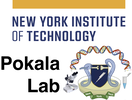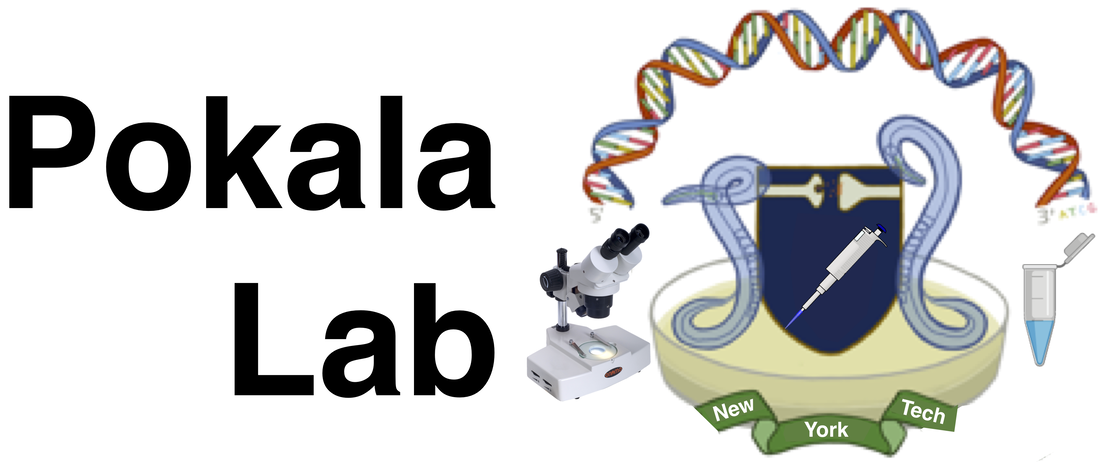Download Jmol-14.29.29-binary.zip
Uncompress the zip file
Double-click on
Jmol.jar in the uncompressed directory
Download Molecular_modeling1_pdb_files.zip
and uncompress
File --> Console to get command line.
Commands to be typed in the console window will be listed in Courier.
Open files by
going to File menu, then Open (File
--> Open)
Right-Click
(PC) or Control-click (Mac) to get pop-up menu.
Go to Style in the pop-up.
Menu commands will
be listed in Helvetica
Style --> Scheme
--> Ball and Stick
In the image
window, figure out how to zoom in and out, and how to rotate the molecule. You
should zoom and rotate ALL the molecules you examine after each display change.
Oleic acid
Go to File menu, then Open (File --> Open)
Select oleic_acid.pdb
from the uncompressed Molecular_modeling1_pdb_files
directory
In the image
window, figure out how to zoom in and out, and how to rotate the molecule. You
should zoom and rotate ALL the molecules you examine after each display change.
Click on any
atom. In the Console window you should see something like:
C5 #5 1.404 -3.432
-0.95900005
C5 =
atom name
1.404 -3.432 -0.95900005 = x,y,z coordinates in Å
Find atoms O20 and C19
Display --> Measurements on (checked)
Double click on O20 and move the pointer to C19. The distance should appear.
1. How does this
distance compare to you experimental estimate of oleic acid size?
Helical peptide alpha1
File --> Open alpha1.pdb
In the console:
spacefill
spacefill off
Style --> Scheme
--> Ball and Stick
ribbon
ribbon 200
ribbon only
ribbon 50
ribbon off
select all
Style --> Scheme
--> Ball and Stick
backbone only
backbone 50
Now select only
the Ca carbons in the backbone
select *.CA
Style --> Scheme
--> Ball and Stick
backbone 50
Rotate to look
down the helix.
1. How many
amino acids per helical turn?
Find the first
CA atom and click on it. What amino acid is it? Do for the entire structure.
2. What is the
sequence in the canonical N-terminal to C-terminal order?
restrict backbone
Style --> Scheme
--> Ball and Stick
ribbon 50
Display the
backbone hydrogen bonds
hbonds calculate
Notice that the
first 4 amides are not hydrogen bonded, and carbonyls 8,9,10 not hydrogen
bonded. This gives the N-terminal end of the helix a partial + charge and the
C-terminal end a partial - charge. This results in an overall electrical field dipole.
Immunoglobulin antibody binding
protein G GB1
Protein G is a
cell surface protein on Streptococcus
bacteria that binds antibodies. It is made of multiple independently folded
domains that each bind an antibody molecule. GB1 is
one these domains. GB1 is perhaps the best studied
protein molecule of all time.
File --> Open GB1.pdb
Style --> Scheme
--> CPK Spacefill
The isolated red
balls are water molecules. The protein structure was solved in water. While
bulk water molecules diffuse rapidly, specific regions around proteins often
have higher residence times for water molecules.
select water
color green
Now let's look at the backbone
hydrogen bonding in the context of an entire protein.
delete water
restrict backbone
Style --> Scheme
--> Ball and Stick
hbonds calculate
ribbon 100
The command show
structure lists amino acid
residues for each secondary structure element. While helicies
are contiguous, beta sheets are made of strands. Each strand has a direction
from N-terminus to C-terminus.
1. What strands
form parallel (going in same direction) beta sheets with each other?
2. What strands
form anti-parallel (going in opposite directions) with each other?
3. Is it
necessary for strands that make up a beta sheet to be contiguous in sequence?
Now we will look
at the distribution of different types of amino acid sidechains
in a protein structure.
ribbons only
ribbon 400
hbonds off
First, the
hydrophobic sidechains (ile,
leu, val, phe, tyr, trp):
select sidechain and hydrophobic
Style --> Scheme
--> Sticks
Style --> Scheme
--> CPK Spacefill
Now, all the
other non-hydrophobic sidechains:
restrict backbone
select sidechain and not hydrophobic
Style --> Scheme
--> Sticks
Style --> Scheme
--> CPK Spacefill
Now, re-examine
the locations of hydrophobic sidechains:
restrict backbone
select sidechain and hydrophobic
Style --> Scheme
--> Sticks
Style --> Scheme
--> CPK Spacefill
4. What do you
notice about the hydrophobic sidechains and how they
are arranged in or on the protein? Why might this be?
GB1 complexed with IgG antibody
File --> Open GB1_IgG.pdb
Style --> Scheme
--> CPK Spacefill
color chain
ribbons only
hbonds calculate
Zoom into the
region between GB1 and antibody.
1. How do the
backbones of GB1 and the antibody interact?
ribbons off; hbonds off
Select sidechains on GB1 (A) within 8.0 Å of antibody (G) and vice
versa:
select
within (8.0, :G) and :A and sidechain or within (8.0,
:A) and not :A and sidechain
Reset the center
of rotation to be at the GB1:antibody interface, and
display the sidechains
View --> Define Center
Style --> Scheme
--> Ball and Stick
hbonds calculate
Style --> Scheme
--> CPK Spacefill
select backbone; ribbon
50; color chain
select
within (8.0, :G) and :A and sidechain or within (8.0,
:A) and not :A and sidechain
Style --> Scheme
--> Ball and Stick
Style --> Scheme
--> CPK Spacefill
2. What is the
distribution of atoms at the molecular interface? How does this compare to the
types of atoms found on the inside and outside of GB1 on its own?
3. What types of
interactions appear to be driving association between protein G and antibody?
DNA
File --> Open DNA.pdb
Style --> Scheme
--> CPK Spacefill
Rotate the
molecule. You should note two grooves spiraling up.
1. Are these grooves
equivalent?
Style --> Scheme
--> Cartoon
color chain
select bases
Style --> Scheme
--> CPK Spacefill
Note how the
bases are stacked on top of each other.
2. How does this
compare to the protein core and protein complex you examined?
Style --> Scheme
--> Sticks
hbonds
calculate
3. Without
actually selecting any atoms or having memorized the structures of bases, you
should be able to distinguish between adenine/thymine and guanine/cytosine base
pairs. How?
hbonds off
select bases
Style --> Scheme
--> CPK Spacefill
select backbone
hbonds off
Now examine
linkages between nucleotide #6 and its neighbors #5 and #7
restrict 6:A
View --> Define Center
Style --> Scheme
--> Ball and Stick
select backbone
and 5:A or backbone and 7:A
Style --> Scheme
--> Sticks
We typically
draw nucleotides such as #6 in two dimensions, with the base and sugar co-planar.
4. Describe the
orientations of the ring planes of the base and sugar with respect to each
other.
5. Bases are
numbered from low to high. By clicking on the atoms, can you determine how this
directionality is defined? Which sugar carbon is attached to the base? Which
sugar carbon is attached to the preceding nucleotide? Which to the next
nucleotide?
When you click
on an atom, you should see something like this:
[DC]6:A.C2' #109 -6.258 46.192 -0.402
The [DC] refers to Deoxy-Cytosine
(C). Similarly [DA] = A,
[DG] = G, and [DT] = T
restrict :A
Style --> Scheme
--> Ball and Stick
6. Write the DNA
sequence in the canonical orientation.
7. What is the
sequence of the other strand (in the canonical orientation)?
Maltose Binding Protein (MBP)
Maltose
binding protein is used by E. coli to
transport maltose in the periplasm.
File -->
Open MBP_overlay.pdb
Examine maltose:
restrict mal
View --> Define Center
Style --> Scheme
--> Ball and Stick
Style --> Scheme
--> CPK Spacefill
Examine the
maltose structure. In the unbound state, the polar atoms interact with polar
water molecules. The protein must minimally compensate for these lost
interactions in order to bind.
Examine the
unbound protein:
restrict :A
restrict backbone
Style --> Scheme
--> Trace
color magenta
select mal
Style --> Scheme
--> CPK Spacefill
select within (8.0, mal ) and not mal and :A
Style --> Scheme
--> Ball and Stick
Style --> Scheme
--> CPK Spacefill
Style --> Scheme
--> Ball and Stick
1. Are the
maltose polar atoms all making interactions with the protein?
Let's see what
happens to the protein structure upon binding to maltose.
restrict backbone
Style --> Scheme
--> Trace
Color the
unbound form (:A) magenta and the bound form (:B) cyan
select :A
color magenta
select :B
color cyan
select mal
Style --> Scheme
--> CPK Spacefill
Note how one of
the protein lobes bends down over the maltose in the bound (cyan) structure.
This Venus flytrap conformational change is typical of the periplasmic
binding protein superfamily. Other members include neurotransmitter receptors
in eukaryotes (like us).
Now display the
structure of the bound form of MBP:
restrict :B and
backbone
Style --> Scheme
--> Trace
color cyan
select mal
Style --> Scheme
--> CPK Spacefill
Notice how the
protein has two lobes, with the maltose ligand between them.
Zoom in and out
to closely examine the ligand region.
Select only the protein
atoms around the maltose
select within (8.0, mal ) and not mal and :B
Style --> Scheme -->
Ball and Stick
Style --> Scheme
--> CPK Spacefill
Style --> Scheme
--> Ball and Stick
2. How does this
differ from the unbound structure?
3. How does the
protein compensate for these interactions that are lost by being sequestered
from solvent water?
Polar atom
interactions with water that are lost upon binding are compensated with equivalent interactions with protein
atoms. However, in order to make binding more favorable than unbound, the
protein must make additional interactions with the ligand, beyond what water
can make.
4. What types of
interactions might drive binding, such that the energy of the bound state is lower than the energy of the free state?
In addition to the maltose structure, you might also want to look at the spatial
distributions of sidechain and atom types in protein
G you found earlier.


